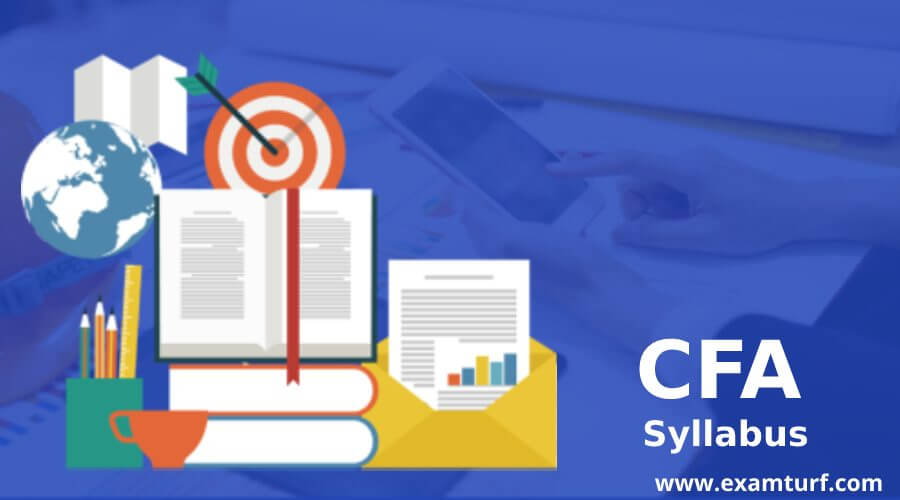
Introduction To CFA Exam
Chartered Financial Analyst (CFA) charter, to achieve this degree, one needs to complete the CFA course. The CFA charter is offered by the US-based CFA Institute. CFA Institute was established in 1949. CFA charter holder gets the position at a senior level regarding investment management and asset management. The CFA syllabus creates investment professionals. It is a respected degree course in the field of finance. Candidates need to appear for three levels of the exams that are level I, level II, and level III. Across the world CFA exam was conducted in 170 cities for the June session and 70 cities for the December session. In India, the CFA exam is conducted in 11 cities.
Key Takeaways
- Globally recognized CFA institute conducts the CFA exam.
- This is the toughest exam as its syllabus is vast.
- The CFA syllabus is designed to test skills in various fields.
- CFA institute changes its syllabus every year, so keep updated yourself with the new syllabus of the CFA Institute.
CFA Eligibility
- To appear for the CFA exam candidate should have a bachelor’s degree or should be in the final year of the bachelor’s degree.
- Experience of 4 years is compulsory.
- Candidate must have an international passport.
CFA Syllabus
Given below is the CFA syllabus:
1. Syllabus For CFA Level I
Given below is the syllabus for CFA level I:
| Topic | Sub Topic | Weightage According To CFA Institute |
| Financial reporting and analysis | Financial reporting standard, financial reporting quality, financial analysis technique, income tax. | 13-17 |
| Economics | Demand and supply analysis, macroeconomics, microeconomics. economic growth, the structure of the firm, and the market. | 8-12 |
| Quantitative method | Hypothesis testing, probability concept, the time value of money, market returns, and statistical concept. | 8-12 |
| Corporate finance | Cost of capital, capital budgeting, capital structure. | 8-12 |
| Derivatives | Basics of derivative pricing and valuation, option valuation, options strategies, forward markets and contracts, futures markets and contracts. | 5-8 |
| Fixed income | Introduction to fixed income valuation, introduction to asset-backed securities, fixed income securities, fixed income market, fundamentals of credit analysis. | 10-12 |
| Equity investments | Security market indexes, market efficiency, market organization and structure, introduction to industry & company analysis, overview of equity securities. |
10-12 |
| Alternative investments | Hedge funds, mutual funds, commodities, real estate, private equity, infrastructure. | 5-8 |
| Portfolio management | Risk management, risk measurement, portfolio planning, and construction. | 5-8 |
2. Syllabus For CFA Level II
Given below is the syllabus for CFA level II:
| Topic | Sub Topic | Weightage According To CFA Institute |
| Financial reporting and analysis | Multinational operations, financial institution analysis, evaluating financial reporting quality, financial statement analysis techniques, and employee compensation. | 10-15 |
| Economics | Economic growth and investment decision, understanding equilibrium value. | 5-10 |
| Quantitative method | Machine learning, time series analysis. | 5-10 |
| Corporate finance | Analysis of dividends, analysis of share purchases, capital, and capital budgeting. | 5-10 |
| Derivatives | Valuation of contingent claim, pricing forward commitment. | 5-10 |
| Fixed income | Credit analysis model, credit default swaps.
Valuation and Analysis: Bonds with embedded option. |
10-15 |
| Equity investments | Private company valuation, residual income valuation, industry, and company valuation, discounted dividend valuation, and return concept. | 10-15 |
| Alternative investments | Real estate investment, real estate securities, private equity valuation. | 5-10 |
| Portfolio management | Analysis of active portfolio management, economics, and investment market, measuring and managing market risk, Introduction to multifactor models. | 10-15 |
3. Syllabus For CFA Level III
Given below is the syllabus for CFA Level III:
| Topic | Sub Topic | Weightage According To CFA Institute |
| Ethics | Ethics and standards of professional conduct, application of the code and standard, asset manager code of professional conduct. | 10-15 |
| Economics | Framework and macro consideration, forecasting asset class returns. | 5-10 |
| Derivatives | Swaps forward and future strategies, the introduction of currency management, and option strategies. | 5-10 |
| Fixed income | Fixed income active management, index-based strategies, an overview of fixed income. | 15-20 |
| Equity investments | Active equity investment, passive equity investment, an overview of equity portfolio management. | 10-15 |
| Alternative investments | Asset allocation to alternative investment, hedge fund strategy, and alternative investment for portfolio management. | 5-10 |
| Portfolio management | Estate planning, risk management, taxes, and private wealth management. | 35-40 |
Conclusion
Aspirants can visit the website www.cfainstitute.org/ to enroll in the CFA exam and for the syllabus. They need to pay for the exam by using the “Schedule my exam” option on the authentic CFA website. Hard efforts and well-preparation is the key to success.
Recommended Articles
This is a guide to CFA Syllabus. Here we discuss the introduction, CFA eligibility, and syllabus for a better understanding. You can also go through our other suggested articles to learn more –
Are you preparing for the entrance exam ?
Join our Finance & Accounting test series to get more practice in your preparation
View More